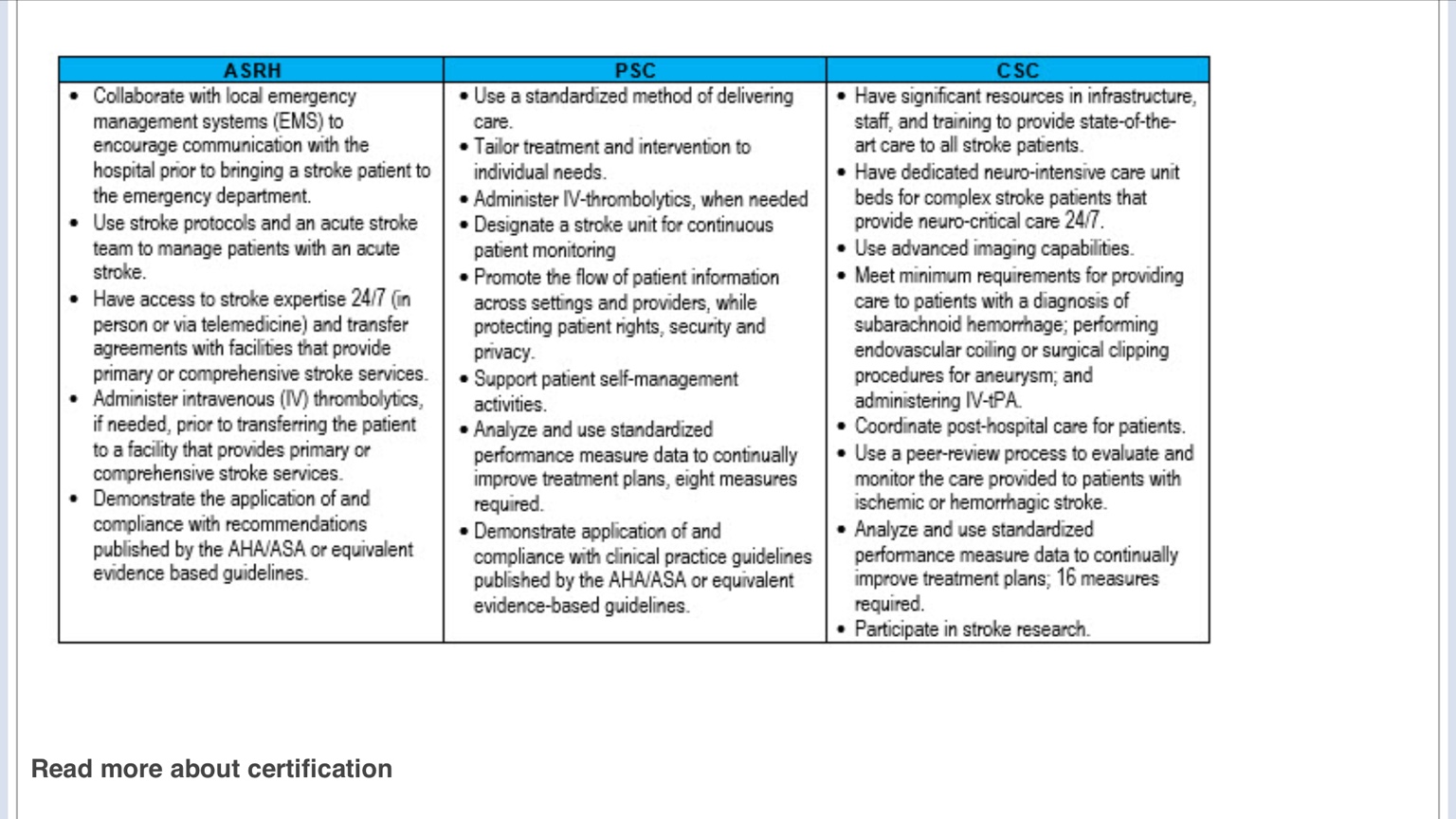- 2,735
- 1,272
- 113
I figured this might be better on its own thread rather than hijacking the other one.
Are there a lot of EMS receiving facilities with 24/7 EDs that are not some kind of stroke center? Admittedly, my experience is limited to Colorado and Delaware, but every ED I have ever utilized is able to take acute strokes, if only for imaging, thrombolytics, and transfer.
I found this diagram on the Joint Commission's website.

I knew about Primary vs. Comprehensive stroke centers, but I had never heard of an "Acute Stroke Ready Hospital" before. Really, if CT imaging and an ED physician is available it doesn't seem like it should be terribly difficult to achieve certification. I've seen some pretty small EDs manage to become stroke certified. With modern access to telemedicine and consults, access to neuro expertise should be growing more widespread.
Does anyone have much experience with a local facility that won't accept CVA patients? How far away is your nearest facility that will?
Are there a lot of EMS receiving facilities with 24/7 EDs that are not some kind of stroke center? Admittedly, my experience is limited to Colorado and Delaware, but every ED I have ever utilized is able to take acute strokes, if only for imaging, thrombolytics, and transfer.
I found this diagram on the Joint Commission's website.

I knew about Primary vs. Comprehensive stroke centers, but I had never heard of an "Acute Stroke Ready Hospital" before. Really, if CT imaging and an ED physician is available it doesn't seem like it should be terribly difficult to achieve certification. I've seen some pretty small EDs manage to become stroke certified. With modern access to telemedicine and consults, access to neuro expertise should be growing more widespread.
Does anyone have much experience with a local facility that won't accept CVA patients? How far away is your nearest facility that will?
Last edited:
